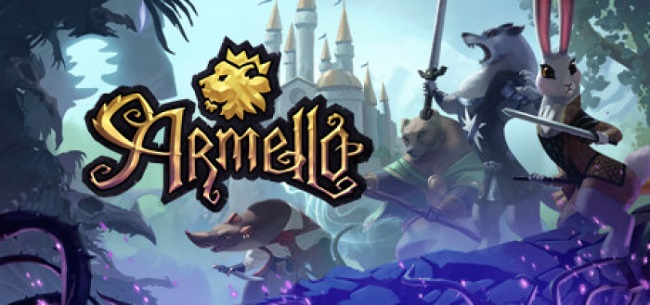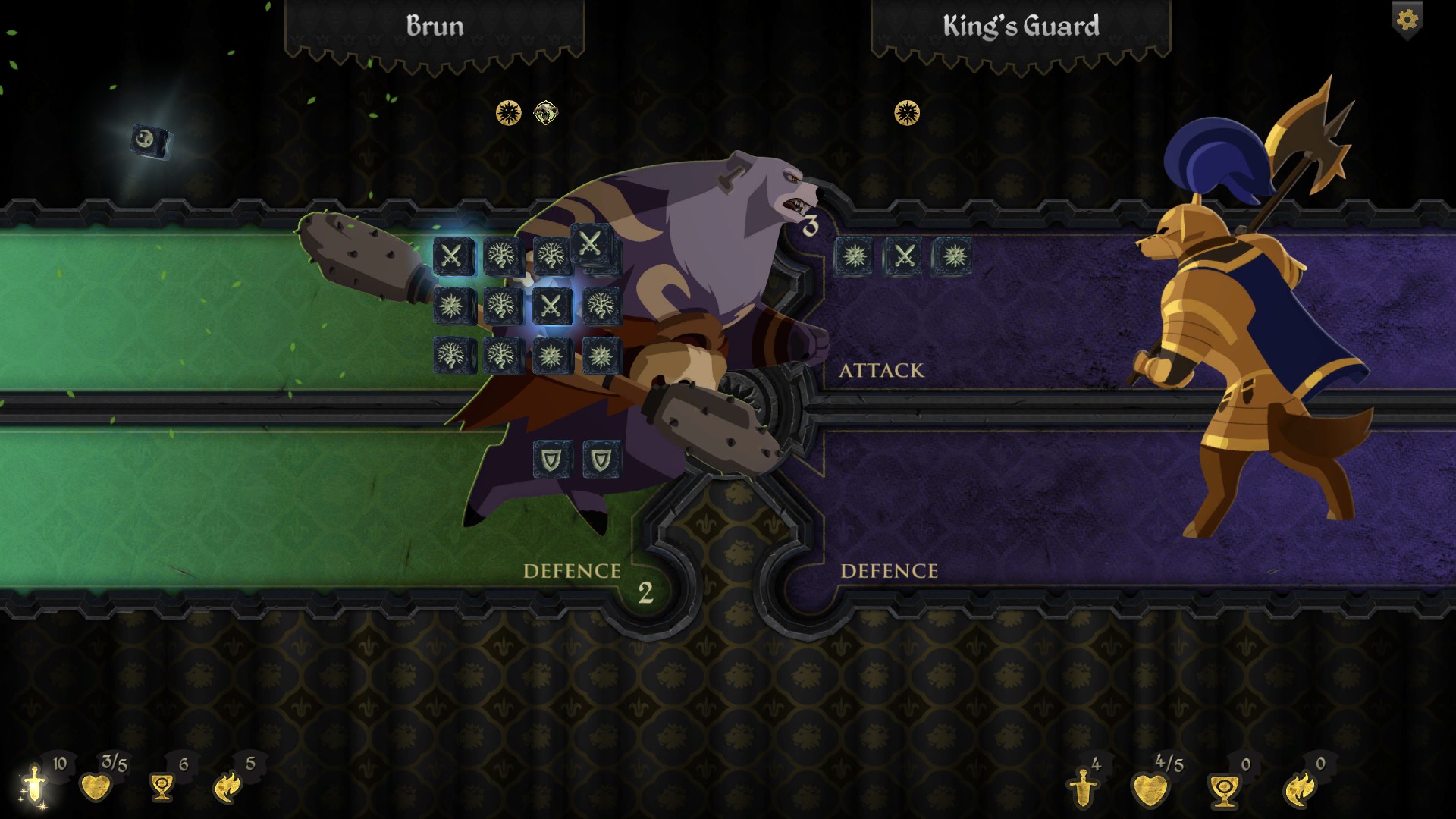
When I was a kid, I loved Brian Jacques’ Redwall series – woodland creatures playing out medieval epics with swords and sorcery – and I still have the books to this day. In adult life, I’m a pretty avid board game player, with an extensive collection of weird and occasionally elaborate games that I love to play with friends. Enter Armello, a game that combines these two loves of mine into a single fantastic title that I didn’t know I needed until I was already playing. Armello is a digital board game, created specifically to be a board game in videogame form as opposed to being an adaptation of an existing board game. The story of Armello sees four animal clans once united under the rule of a Lion King, now in the maddening throes of the Rot, send their best heroes to race for the throne. I have some gripes about a few minor technical and presentation issues but these are hardly game breaking. Armello easily stands both as one of my favorite board games and videogames.

Now if I can just get an RPG Redwall game, I can get really drunk on nostalgia.
The prologue, which also acts as a tutorial for the game, introduces you to the story and the four main characters. The kingdom of Armello is under threat from the terrifying madness of the Rot infected King, who once upon a time united the four clans – Bears, Wolves, Rats, and Rabbits – under his rule. Now, with his imminent demise apparent to all, a race for the crown has begun among the clans and heroes are rising up to claim their destiny. That’s really where the story development ends in a classic videogame sense and never gets picked up again, but it’s a classic adventure board game premise and setup. While light on details, it’s rich in potential and sets the stage perfectly for players to create their own stories through gameplay.
Board games are rarely about telling a specific story; the fun is in creating your own using the story elements and game mechanics provided to you. There are four different victory conditions that can be fulfilled to win the game, and each character’s abilities have an aptitude for a particular end-game strategy. You can challenge the King and kill him in direct combat. You can be the prestige leader and thus the king’s most trusted adviser when he finally succumbs to the rot and passes “naturally.” You can also collect four spirit stones, which are used to instantly cleanse the King of Rot and end his miserable existence upon exposure. Or you can accrue more Rot points than the king, who has seven and is hard as balls, and take him on in combat for a corruption victory.

Pro-tip: Mercurio is OP for, like, all of these.
A dice system is used for determining the outcome of encounters, be it combat or perils – challenges designed to slow down and harm players. This isn’t hugely unique, but it’s a robust system that works perfectly within the context of the rest of the game, providing a fun and fast way of resolving encounters. A die will have six symbols: A sun, a moon, a sword, a shield, a tree, and a Rot worm. Dice can “explode” upon certain results, adding one die to the appropriate pool while creating a bonus die to be rolled. These symbols are also assigned randomly to the cards that players pick up, and players can “burn” cards during encounters to pre-determine a single die roll with the symbol of that card. When both players in combat have Rot, whoever has the highest Rot points takes their opponents Rot points as extra dice to roll.
This system makes for some great gameplay, no matter what your approach to the game is or what kind of strategy you employ. The unique abilities of each of the eight available characters also really lend themselves well to replayability for the adventurous, and otherwise cater to an array of play styles. I’m particularly fond of taking characters that can hold a lot of cards so that I can burn the lot during encounters and leave bugger all to chance. My luck in board games is, and always has been, extraordinarily awful and I often have to scheme, double deal and backstab just to win – something Armello has recreated unnervingly well.

Though sometimes I get lucky.
Armello’s greatest strength is how it takes advantage of the digital medium to greatly improve how a board game is played. There are mechanics that make sense for a board game that could only really work in a videogame, and otherwise regular board game mechanics that are enhanced for similar reasons. An example of this would be the Stealth mechanic, which not only hides your character from other players but your actions also. Moving between stealth spaces allows you to spend the entire round hidden away in blissful anonymity. In traditional board games, there’d have to be all kinds of rules about how other players have to pretend that they can’t see you and strategising would be made harder for the extra attention.
An example of how it greatly improves normal board game mechanics would be in how it counts the cards that affect Dice rolls during battles or while encountering perils. Such cards will appear rapid fire at the top of the screen, with dice literally being sucked into or spat out of these cards. Any cards that have an ongoing effect during the rest of the battle, such as altering the effects of certain dice icons, will be displayed at the top of the screen for you to check over. This all happens within a few seconds before the cards disappear, leaving their affects behind for you to play out as you would normally. Maybe this all sounds really self-explanatory, and perhaps you have to be a regular player of board games to appreciate it, but the fluid gameplay they’ve created here is truly impressive.

A game of Armello takes about an hour, which if it were an actual board game would be on top of another hour of addition, recounts, and arguments.
If there’s any major criticism of Armello, it’s the camera controls. There are three methods that can be used to navigate your way around the board and none of them work especially well. You can click and drag the board in the direction you want, which is slow but usually sure to do what you want, just make sure not to accidentally move or use an action this way. You can use WASD to move the camera though the game tends to get moody about when it wants this to work and will periodically stop accepting input. Finally, you can drag the cursor to the edges of the screen to move around, which only works in certain areas since much of the HUD hugs the borders of the screen. It’s a minor complaint, but it would’ve been nice if they just picked one camera control method and made it work.
There are some issues with the way information is presented on the post-match multiplayer screens, as well. The Accolades that are awarded to each player after each match aren’t explained anywhere in the game and are often inconsistent across player screens. I can see that I was awarded the Necromancer and Harbinger accolades, whatever those mean, but my playing partner might see me as having been awarded Hoarder and Thief… Whatever those mean. Having post-game accolades are a nice touch to games like this but not when they don’t mean anything. I can tell you this, though, I’m absolutely a Harbinger of something.

*sniffs armpit*
Sound design is an area that Armello excels in and should be commended for, with every type of event, action, or card use having a distinct sound effect. Given that you’ll spend a lot of time in Armello looking over your inventory, or otherwise planning your next move and not watching what’s happening, this is important. Combined with the read-out of gameplay highlights at the bottom of the screen, it makes it easy to keep track of everything that’s going on without always directly paying attention. Speaking as someone who, as previously mentioned, spends a lot of time working out how he can screw other people over in board games, this is something I appreciate.
The game also has an awesome, cartoonish fantasy appearance that really appeals to that nostalgia I have for mystical woodland creature based fiction. Attacking other players and killing off enemies is a pretty common occurrence but the game isn’t graphic in its violence. Instead, there’s more of a focus on providing detail about the world through the cards’ visuals. Each one of the cards are animated, with their animations showing aspects of the world that are relevant to the card. They go a long way towards world building without explicit storytelling and the artwork provided by the various artists contributing looks fantastic. Throw in a great soundtrack and Armello creates an atmosphere that no board game can.

Digital board games are a great idea; as anyone who regularly enjoys playing board games can tell you, getting a group of adults together into a room at the same time is no easy task. I’ve seen plenty of adaptations of existing board games, but this is the first time I’ve seen a board game created specifically to be a videogame, and it plays amazingly. Aside from some janky camera controls and a few issues with the post-game readouts, there’re no issues with Armello that wouldn’t be an issue of personal preference. The gameplay is extremely fluid and does a commendable job of translation board game mechanics into smooth videogame design. It isn’t the exact woodland creature epic that I would have hoped for (I’d sell my soul for a decent Redwall game), but Armello is an amazing format-blending digital board game hybrid. I thoroughly enjoyed my time with it, and I’ll definitely be continuing to play it in the future.
DISCLOSURE: this game was supplied to us by the publisher, and reviewed on PC across 19 hours of gameplay.











